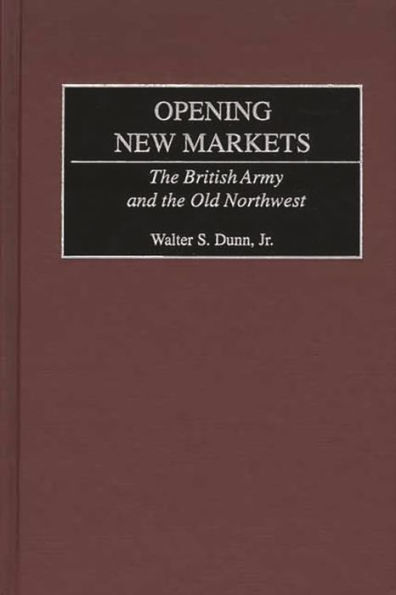Opening New Markets: The British Army and the Old Northwest
After the conclusion of Pontiac's Uprising, frontier trade reopened in 1765. Unfortunately, for the colonists, the renewed activity favored the French in Canada and Illinois and the British traders in Quebec and Montreal. Only three British regiments were assigned to frontier duty, an inadequate number of troops to enforce trade regulations against the French. To keep the peace with local tribes, the British army allowed the French to trade anywhere, while colonial merchants were restricted to army trading posts. Had the army been more astute in protecting colonial interests, colonial merchants might have been more favorable toward paying taxes in support of military efforts.
Frontier commerce was a major component of the colonial economy, ranking third in export behind tobacco and rice. The European demand for fashionable broad-brimmed beaver hats was the driving force that created turmoil on the frontier from 1765 to 1768. After the cession of Canada to Britain in 1763, the French obtained half the beaver pelt exports by forcibly diverting them from Quebec to New Orleans and then on to France. This competition hurt wealthy colonial merchants in New York City and Philadelphia, who blamed the British army and set the tone for the coming conflict.
"1144189438"
Frontier commerce was a major component of the colonial economy, ranking third in export behind tobacco and rice. The European demand for fashionable broad-brimmed beaver hats was the driving force that created turmoil on the frontier from 1765 to 1768. After the cession of Canada to Britain in 1763, the French obtained half the beaver pelt exports by forcibly diverting them from Quebec to New Orleans and then on to France. This competition hurt wealthy colonial merchants in New York City and Philadelphia, who blamed the British army and set the tone for the coming conflict.
Opening New Markets: The British Army and the Old Northwest
After the conclusion of Pontiac's Uprising, frontier trade reopened in 1765. Unfortunately, for the colonists, the renewed activity favored the French in Canada and Illinois and the British traders in Quebec and Montreal. Only three British regiments were assigned to frontier duty, an inadequate number of troops to enforce trade regulations against the French. To keep the peace with local tribes, the British army allowed the French to trade anywhere, while colonial merchants were restricted to army trading posts. Had the army been more astute in protecting colonial interests, colonial merchants might have been more favorable toward paying taxes in support of military efforts.
Frontier commerce was a major component of the colonial economy, ranking third in export behind tobacco and rice. The European demand for fashionable broad-brimmed beaver hats was the driving force that created turmoil on the frontier from 1765 to 1768. After the cession of Canada to Britain in 1763, the French obtained half the beaver pelt exports by forcibly diverting them from Quebec to New Orleans and then on to France. This competition hurt wealthy colonial merchants in New York City and Philadelphia, who blamed the British army and set the tone for the coming conflict.
Frontier commerce was a major component of the colonial economy, ranking third in export behind tobacco and rice. The European demand for fashionable broad-brimmed beaver hats was the driving force that created turmoil on the frontier from 1765 to 1768. After the cession of Canada to Britain in 1763, the French obtained half the beaver pelt exports by forcibly diverting them from Quebec to New Orleans and then on to France. This competition hurt wealthy colonial merchants in New York City and Philadelphia, who blamed the British army and set the tone for the coming conflict.
95.0
In Stock
5
1

Opening New Markets: The British Army and the Old Northwest
216
Opening New Markets: The British Army and the Old Northwest
216Hardcover
$95.00
95.0
In Stock

Product Details
| ISBN-13: | 9780275973292 |
|---|---|
| Publisher: | Bloomsbury Academic |
| Publication date: | 05/30/2002 |
| Pages: | 216 |
| Product dimensions: | 6.00(w) x 9.00(h) x 0.62(d) |
About the Author
From the B&N Reads Blog
